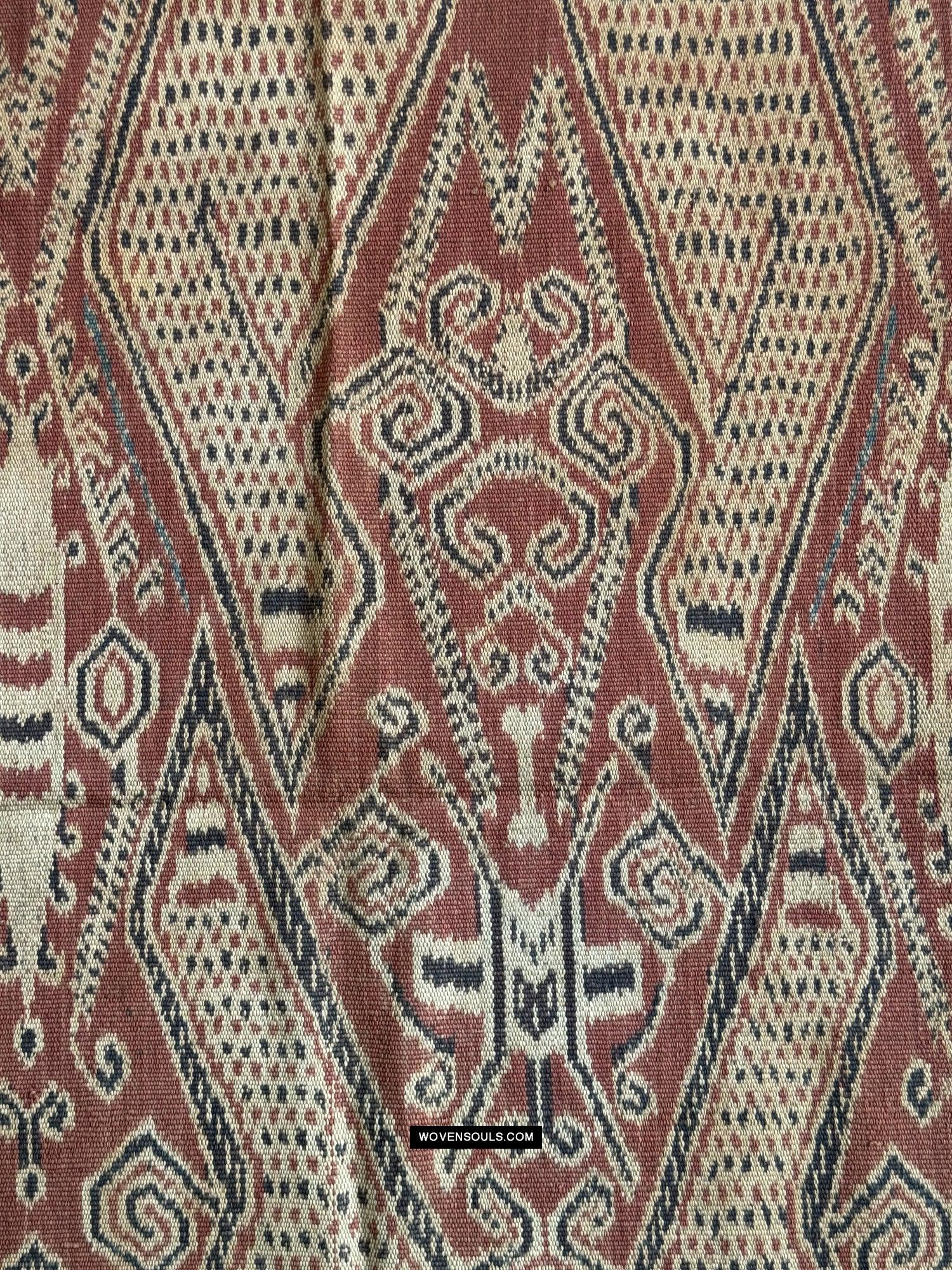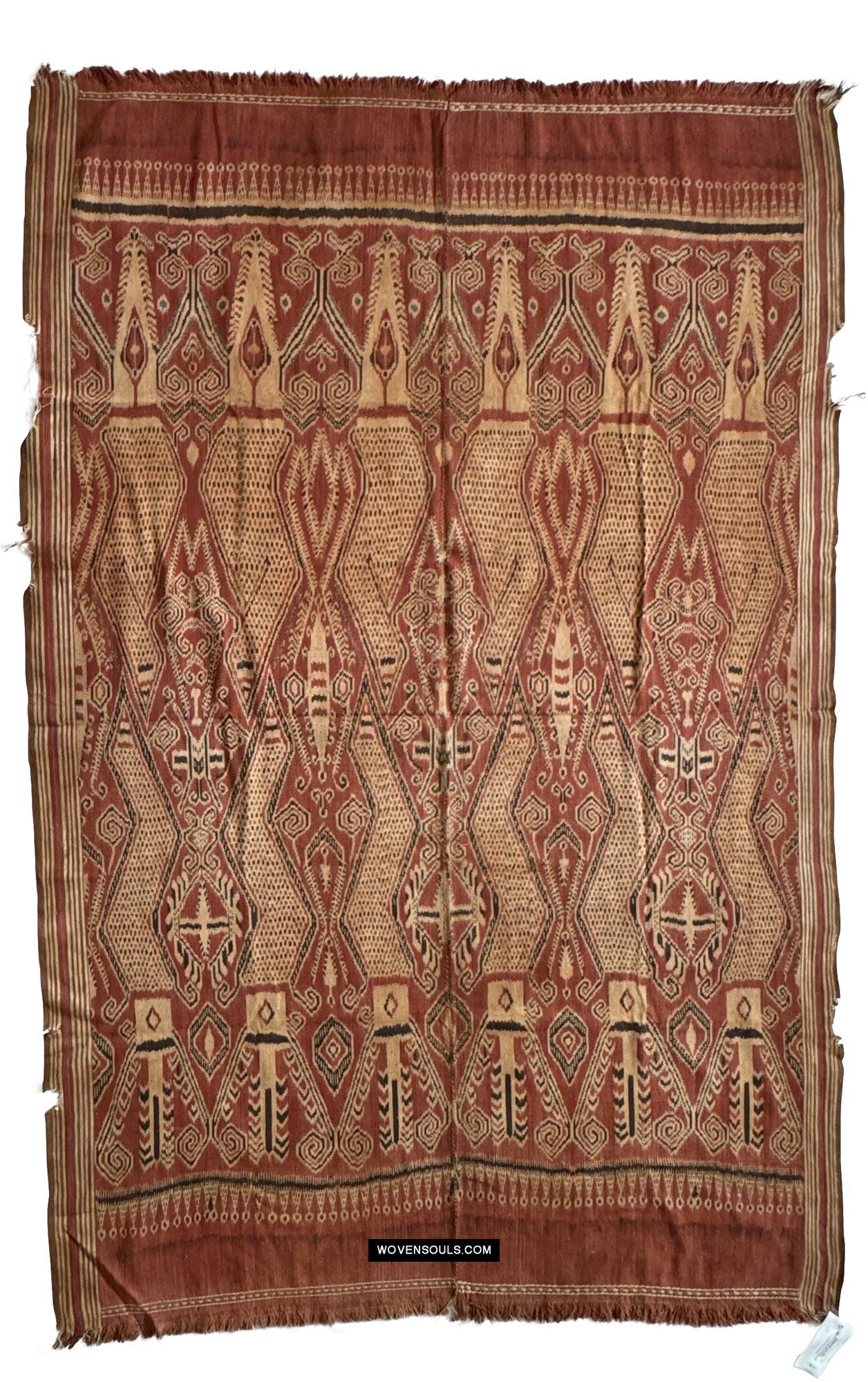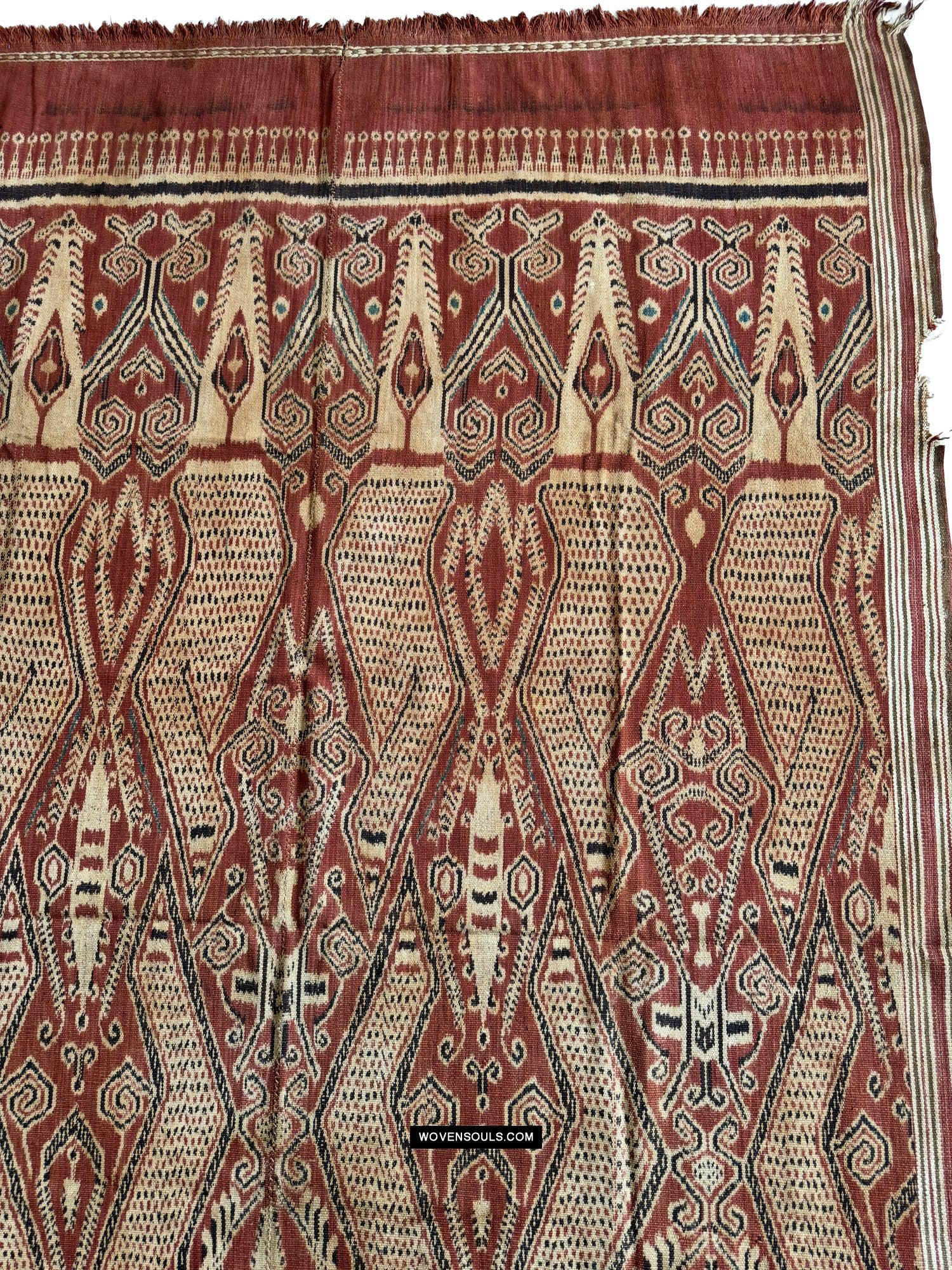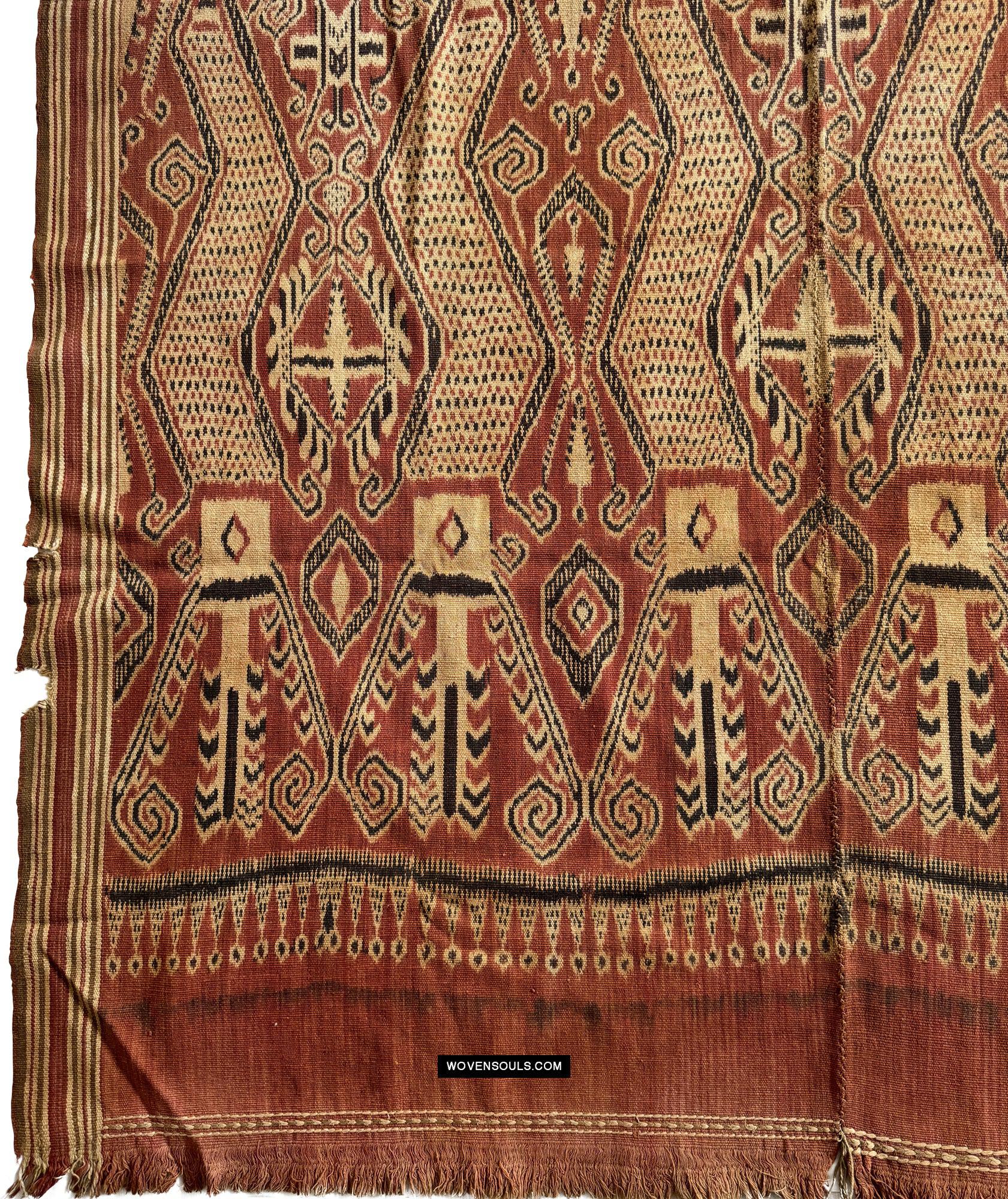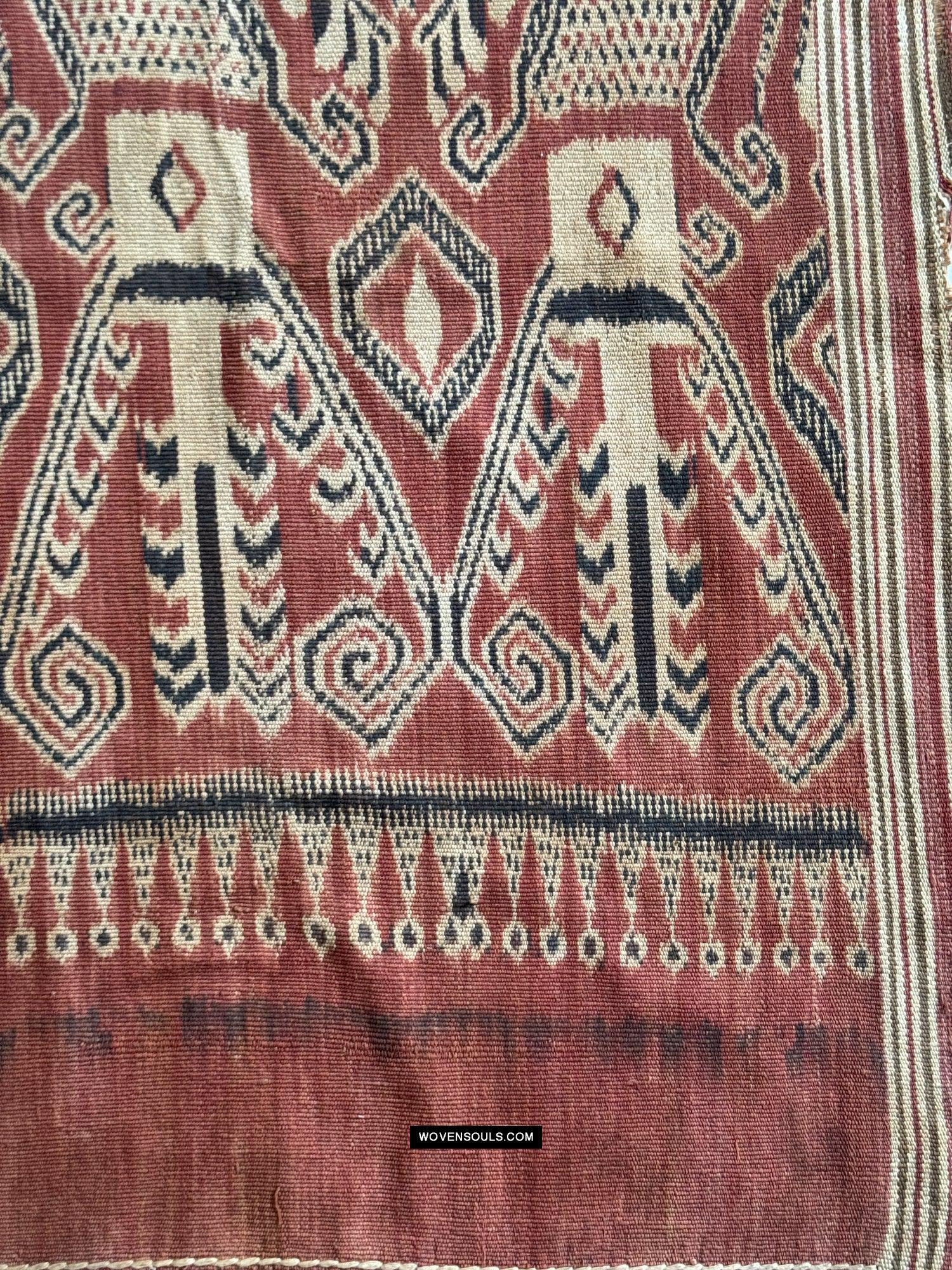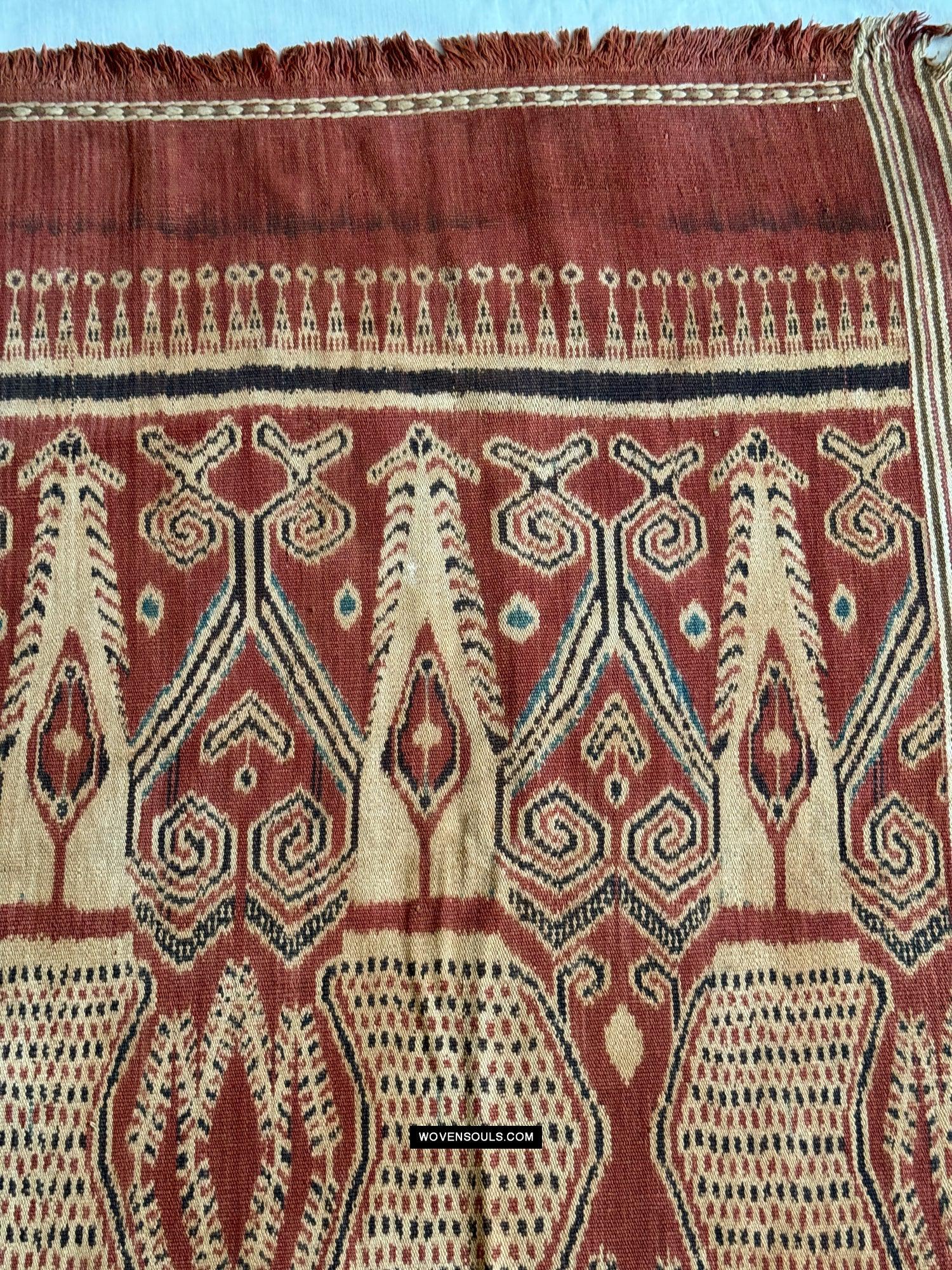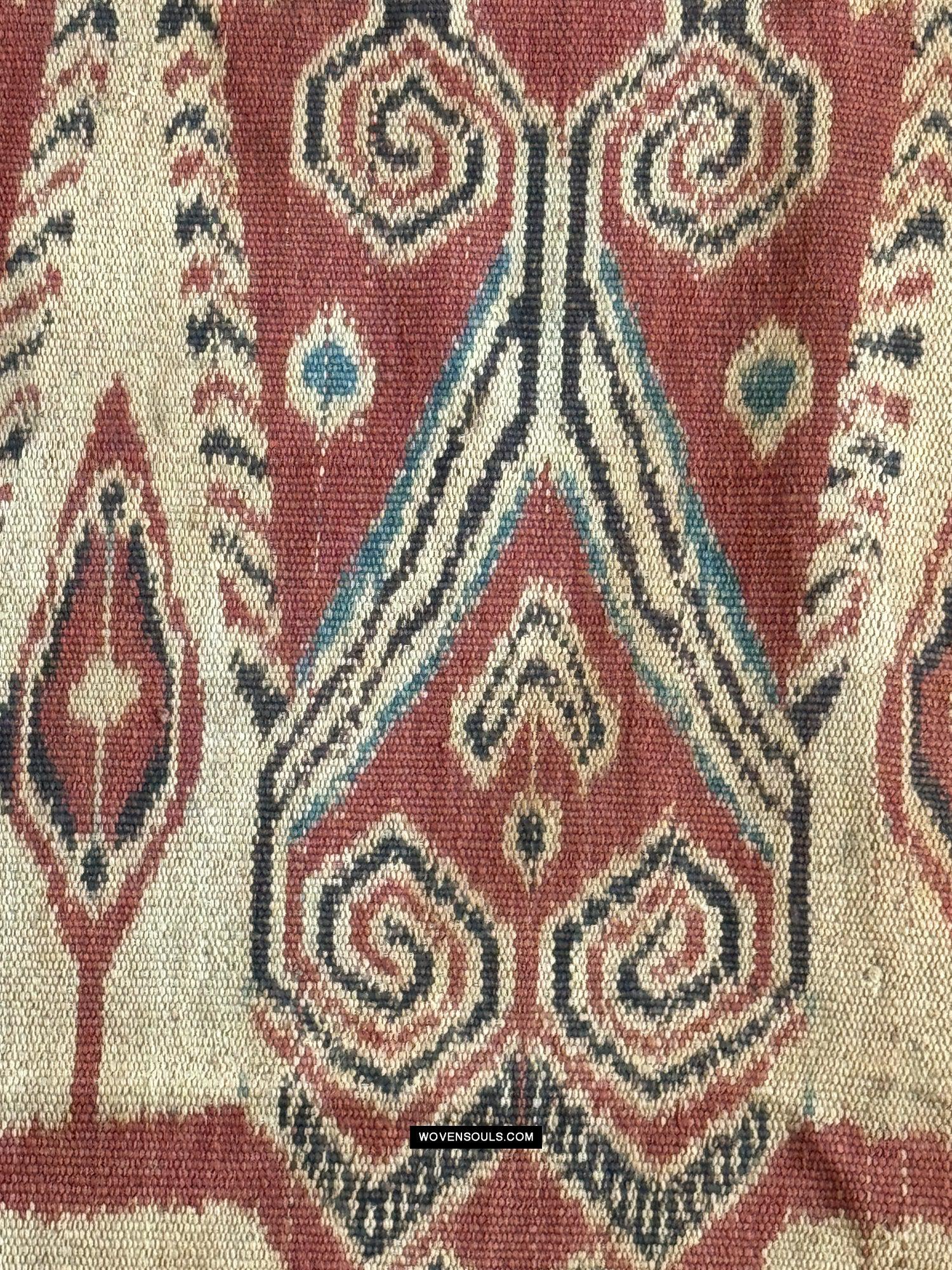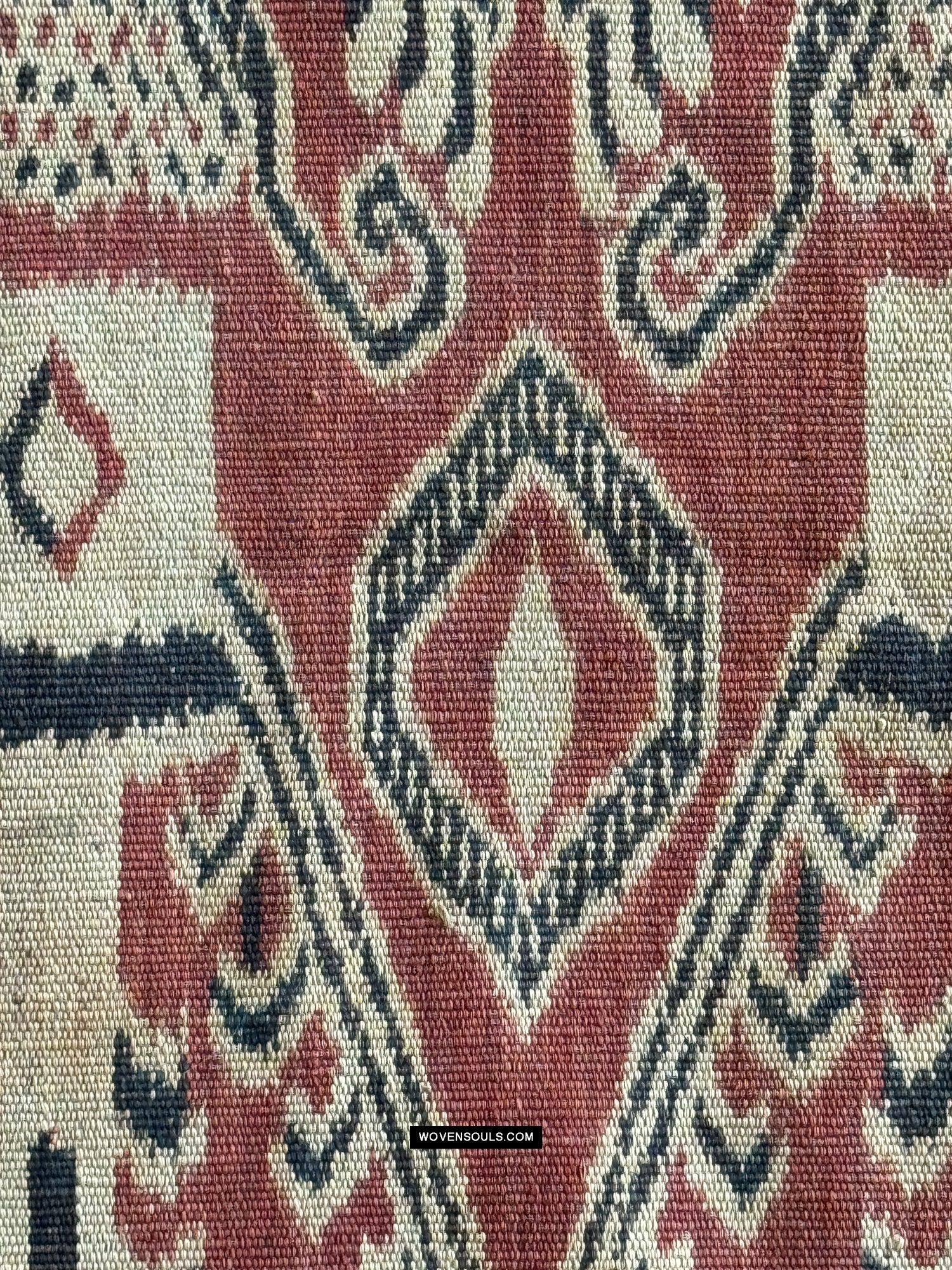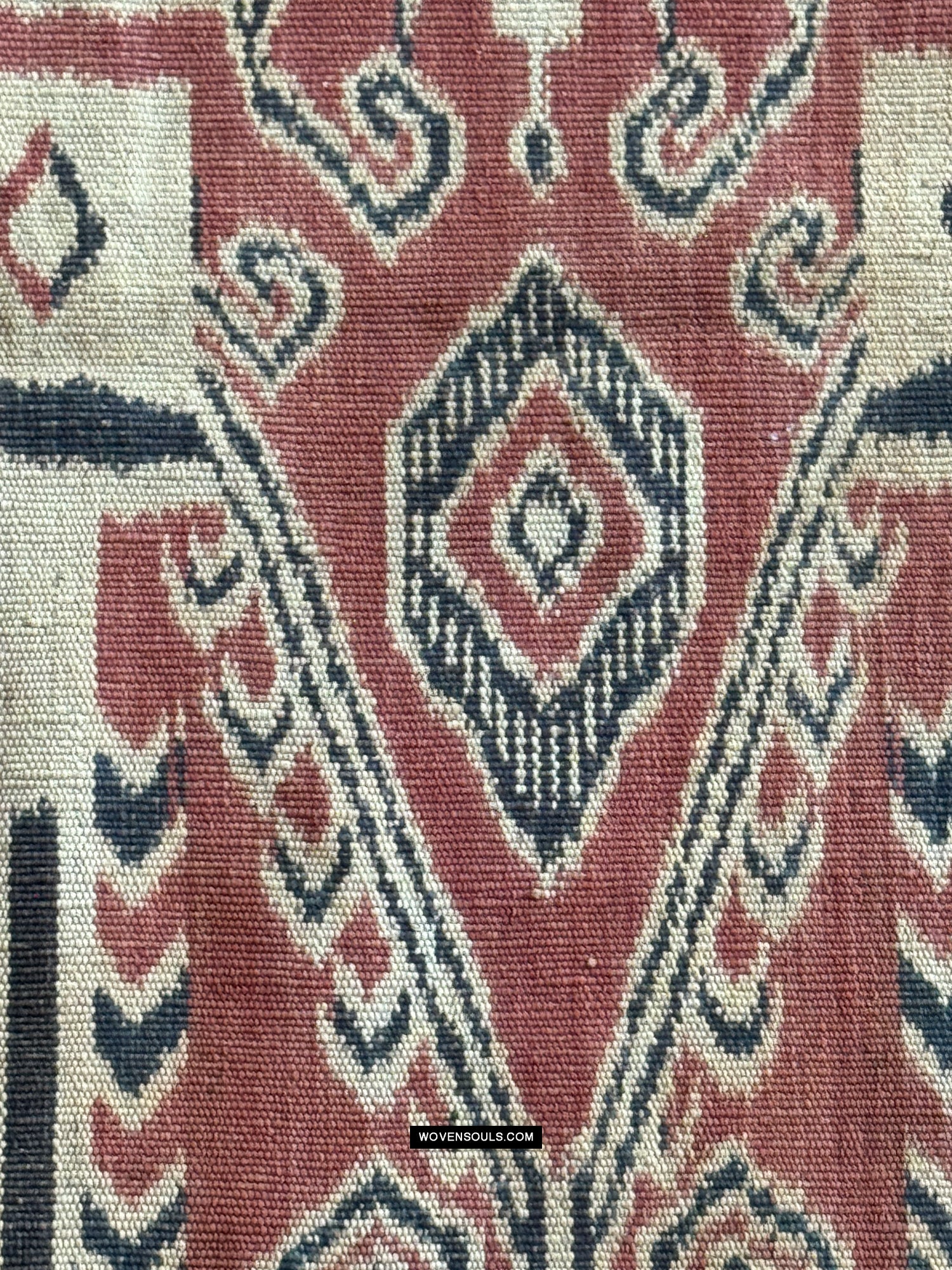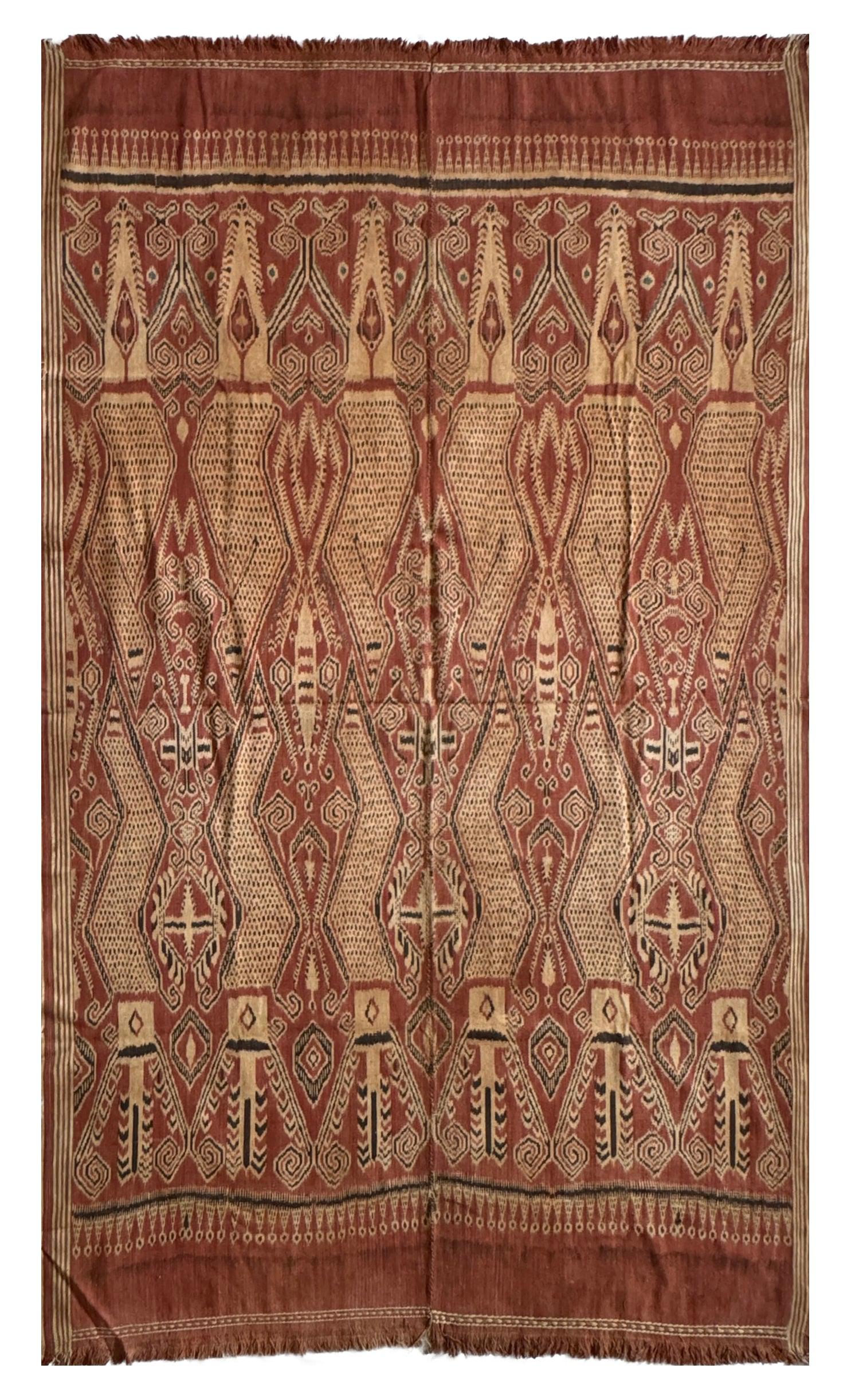1831 Antique Iban Ceremonial Ikat - Serpent Buah Penyandih Ngelai
Antique Iban Ceremonial Ikat Pua Kumbu
Quite likely this is the Buah Penyandih Ngelai pattern
***
Among the Iban, textiles are treasured as they are more than just objects made of fibre.
In some cultures, such as the Iban, textiles have played a major, if not central role, in all the ceremonies surrounding the important events in life. Power structures among women are based on dyeing and weaving skills. Perhaps the most important materials owned by families were textiles.
Ikat textiles are among the hardest to make, as the tie-dye is done on the unwoven threads before they are woven into cloth. So with a design in the weaver's imagination, the thread is dyed in sections as per the pattern that is required to be created. This takes immense precision and calculation. So when we note that these textiles were made decades ago in the rainforests of Borneo - Kalimantan, Sabah & Sarawak, there is a sense of awe for the creators.
Further, textiles themselves were believed to have the power to connect to the spirit world. The motifs, the dyes and the complexity of the weaving - all factors that were a direct result of the weaver's skill and experience - contributed to the power held by a textile.
Only textiles with certain features could be used during the most important community ceremonies and the weavers of these therefore enjoyed an elevated status of prestige.
So to study an Iban textile, requires us to focus on patterns, motifs, complexity and lastly and equally importantly - the dyes. The process of dyeing enjoys a far greater role in the value chain of production of Iban textiles than it does in any other group of textiles.
Size: 191 x 127 cm / Edges have damage - repairs needed.
MY NOTES ON THIS IKAT:
- This Ikat is very similar to the textile titled 'Seating place of Ngelai pattern' Buah Penyandih Ngelai - Fig 27 in the book Iban Ritual Textiles by Traude Gavin
- Naga - is the Sanskrit word for serpent and or deadly snake and the serpents depicted here are most probably the banded kraits.
- Serpent patterns require planning of the dyed threads along the diagonal or oblique axis. This requires a visualisation of how the adjacent thread will have a specific color at a point just a little higher than the previous one - and so on. So creating a line is itself difficult. Then to have lines that are reasonably straight and of equal thickness across the pattern is extremely challenging.
- Serpents have been patterned with rows of tiny black dots alternating with rows of tiny rust dots.
- In creating Ikat, to have the black contained within a tiny area and not spillover into adjacent areas is itself a remarkable feat. Then, over and above that, to have all the dots across the breadth of the textile aligned in neat rows is an extraordinary feat.
- Further, the each of the serpents have a slim black border. Even these have been enhanced with 'rice grain' fillers!
- Note the horizontal bands that are signs of mastery in ikat weaving
- Note the use of blue
- Extraordinary piece created by a master-weaver.
- Colors: Background rust, black, BLUE, off-white
CLICK TO SEE THE COMPLETE COLLECTION OF IKAT PUA KUMBU
This item has spent a lifetime being used for the purpose of its creation with the original artist/user. Signs of this life lived heartily may be present on the piece in the form of stains, thread loss, loose threads, holes, tears, color run and other imperfections. Therefore the condition must be assumed to be “not” perfect. More photos of such imperfections will be provided on request.
***

